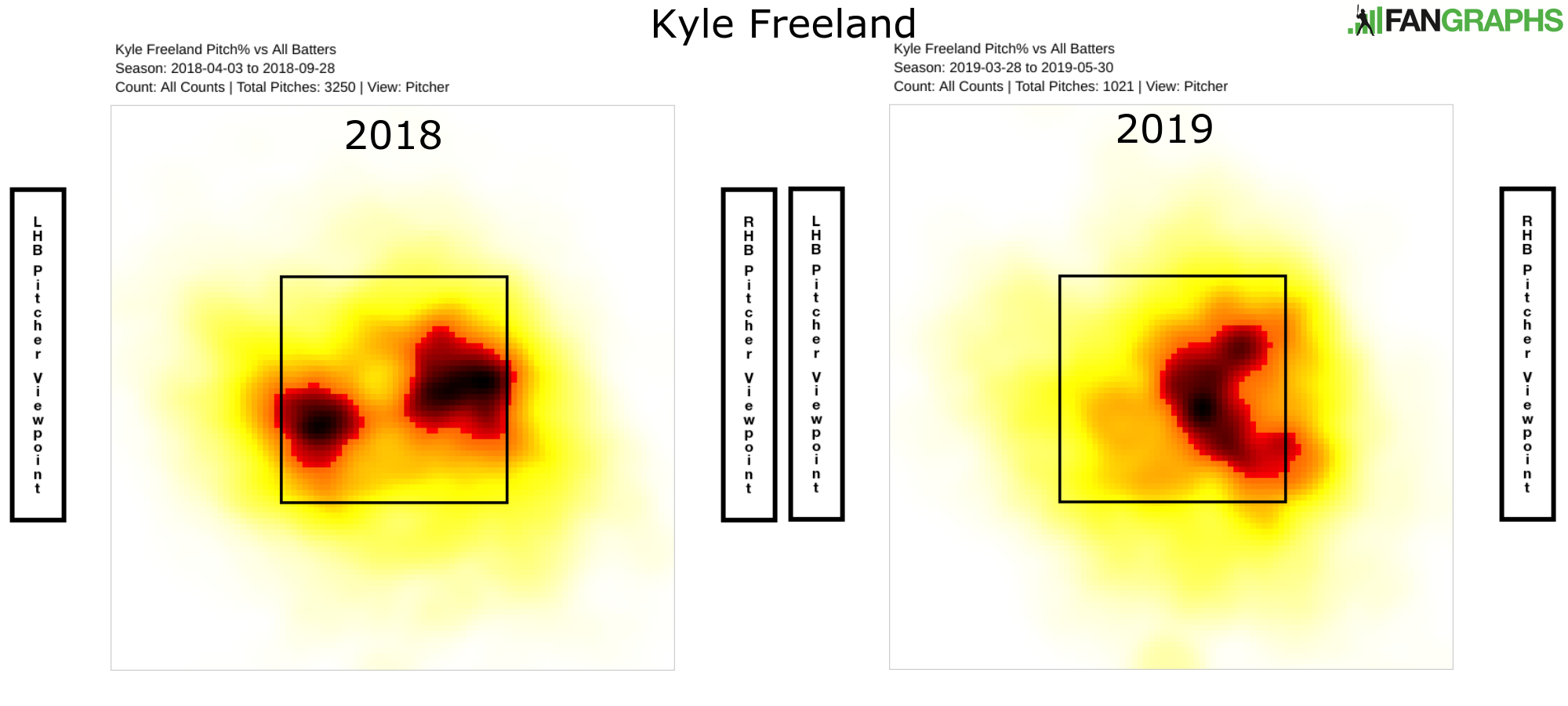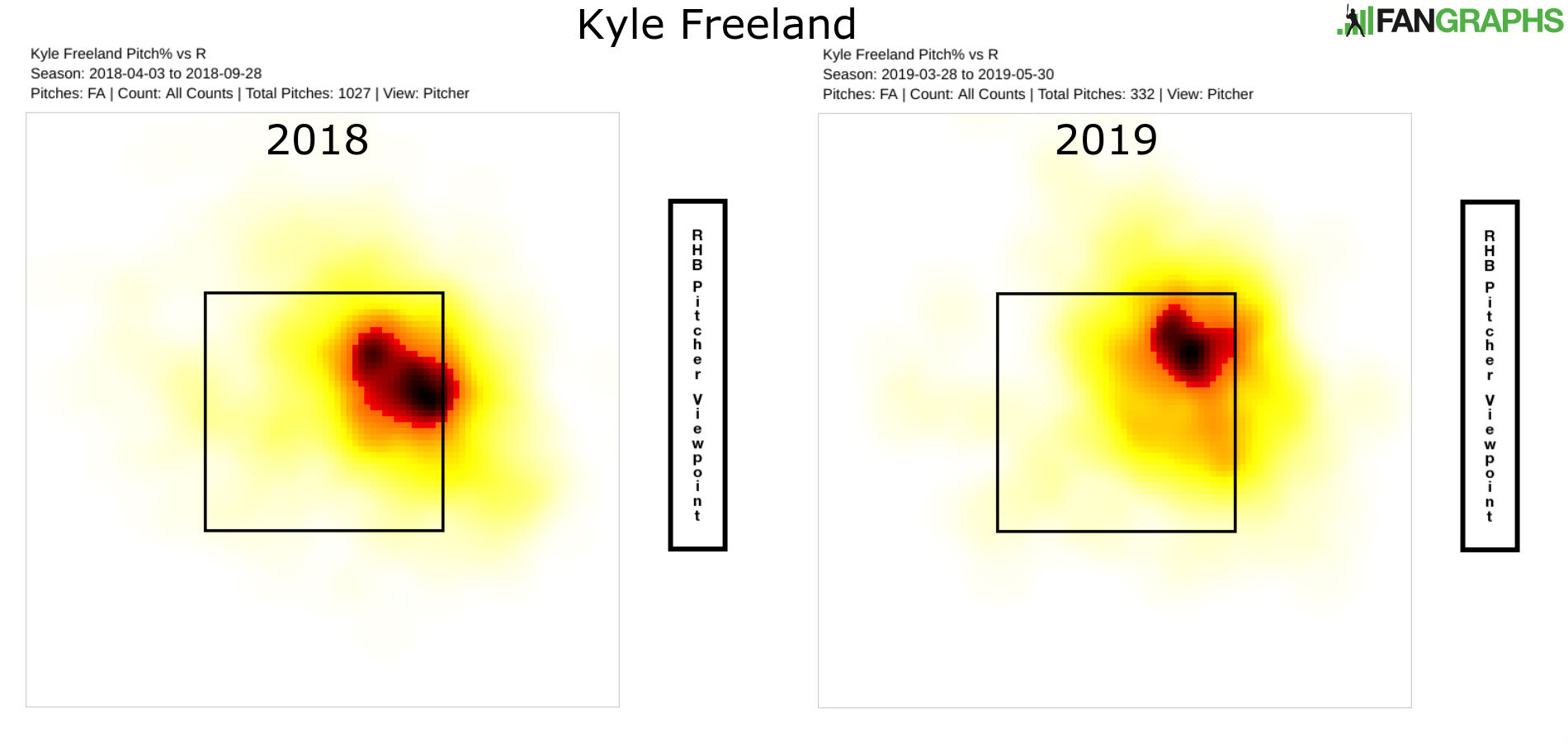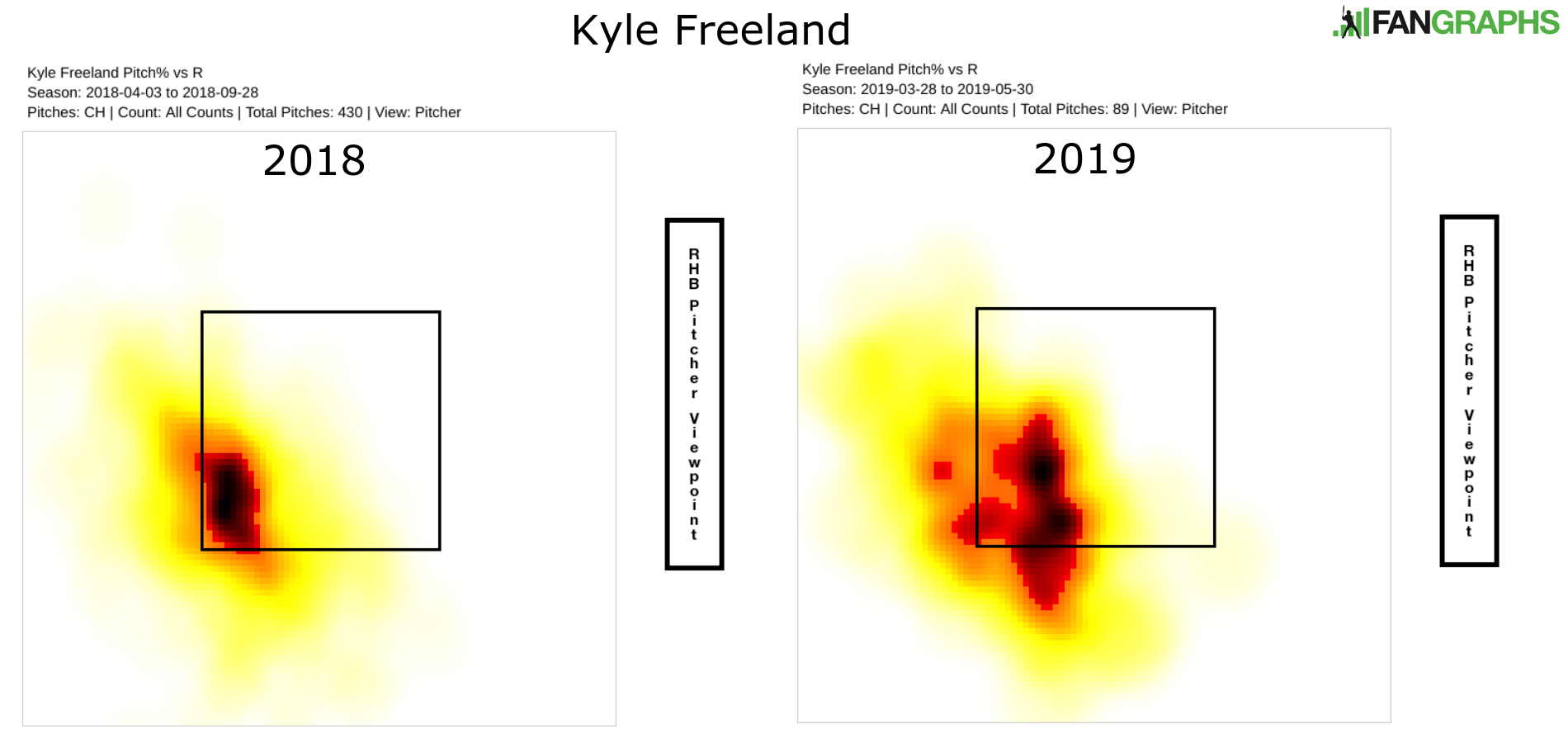Regression Didn’t Come for Kyle Freeland
A year ago, Kyle Freeland had a very good season. For some, it was almost too good. Here at FanGraphs, Freeland put up a 3.67 FIP, and playing half his games in Colorado meant a 4.2 WAR in over 200 innings and one of the 10 best pitching seasons in the National League. Freeland’s ERA was even better than his FIP, and with a 2.85 mark, his RA/9WAR was 7.5, the fifth-best mark in all of baseball. The distance between his ERA and FIP likely created a gap between those who believed Freeland was one of the best pitchers in baseball and merely a good one. The latter group thought that Freeland was in for some regression this year. After a rough two months, including time on the injured list, Freeland has been dispatched to the minors. That’s not regression. Allow me to explain.
Before being sent down, Freeland had a 6.37 FIP, a 7.13 ERA, and had given up 16 homers in 12 starts after giving up 17 in all of 2018. After last season, it’s possible some were expecting another sub-three ERA, but doing so would have been unrealistic. Expecting some regression might have meant that Freeland’s BABIP would go up from the .285 where it was a year ago and his LOB% would go down from 83%. Those numbers wouldn’t affect his 3.67 FIP, but it might take his ERA closer to his FIP. Maybe Freeland’s 8.5% HR/FB would creep up closer to average, leading to a higher FIP and ERA. In fact, projections considered many of those factors and forecast Freeland for a roughly average season with an ERA and FIP around 4.50. If regression had come for Kyle Freeland, that might have been what it looked like. If Freeland were pitching just like last season, we might expect a similar FIP and worse ERA. The problem is that Freeland isn’t pitching like he did last season. This isn’t regression (or reversion). This is Kyle Freeland being not as good of a pitcher as he was a year ago.
Freeland is a command lefty who excelled last season by pitching to his spots. In late 2018, Jeff Sullivan wrote about how good Freeland’s command had been all season, using multiple heat maps. We’ll engage in a similar exercise below, showing Freeland last year and this year. First, here are all of his pitches in 2019 compared to all of his pitches last season:

That’s some precision last season compared to something else so far this year. Here’s his four-seam fastball to righties:

Freeland is perhaps not as precise with the pitch, going a little more up and a little more over the plate, but it looks pretty close. Here’s the fastball against lefties, albeit in a pretty small sample this season:

The lack of pitches this season might be causing the different locations of red, but he’s definitely missed the strike zone more often and appears to be missing up a little bit as well. Here’s the changeup:

He’s pitched the changeup more in the zone this season and hitters have a higher contact rate on the pitch in the strike zone. Now, let’s look at the slider/cutter to righties:

This looks to be a change in strategy for Freeland, as last year he attempted to backdoor his slider to righties most of the time, while this season, he’s looked to go inside. This difference hasn’t been too terrible, though Freeland’s increase in swinging strikes in 2019 has been offset by fewer called strikes on the pitch. The end result is more balls in play on the pitch with fairly similar results. Now, here’s the slider against lefties:

It looks like the pitch has leaked over the plate just a little bit. The result has been roughly the same number of swinging strikes, but fewer taken strikes as hitters have swung more often, thus making more contact when they do swing. Finally, here are his sinkers against both sides of the plate:

He’s pitching all over this season, and it isn’t a handedness issue. Freeland has made a few strategic changes and he’s gotten slightly more swinging strikes. But his called strikes have fallen by about 40%, which probably has to do more with command that isn’t quite what it used to be. Despite getting more swinging strikes, his strikeout rate is down from 20.5% to 18.0% while his walks have gone up by a percent. Making matters worse is that his groundball rate has dropped from 46% to 43%, and putting more balls in the thin air of Colorado isn’t a good idea, particularly in this homer-heavy season. While many of these issues are linked, the main culprit appears to be pitches that just aren’t as good as they used to be.
When I wrote about Freeland near the beginning of last season, I noted that while he was using his four-seam fastball at a higher rate, it was a relatively low spin four-seamer, which made it more likely to keep his groundball rate high. This season, Freeland’s spin rate is up on his four-seamer; it is actually up on all of his pitches. That might sound like a good thing, but the movement on all of Freeland’s pitches isn’t as downward as it was a year ago. Here’s his pitch movement from both last year and this season on his four main offerings:

Every one of his pitches dropped more last season. It’s possible Freeland isn’t quite as strong as he was last season. In 2017, he pitched a little over 150 innings, while last season it was nearly 210, including the playoffs. Perhaps Freeland is exerting a little more force to get the same velocity, and it is hurting both his pitch movement and command. Freeland isn’t the same pitcher he was last season, but it isn’t because good luck turned into bad luck. He’s not the same pitcher because his pitches aren’t as good. He’s getting less movement and not locating pitches as well. Hopefully, he can work out his problems while in the minors and return to the majors with the stuff he had last season. He won’t be confused with many of today’s good pitchers for his stuff, but Freeland was a pitcher unique in today’s game, and it would be good to see him back at his best instead of what we’ve seen so far this year.
Craig Edwards can be found on twitter @craigjedwards.

The ultimate Coors hangover effect.